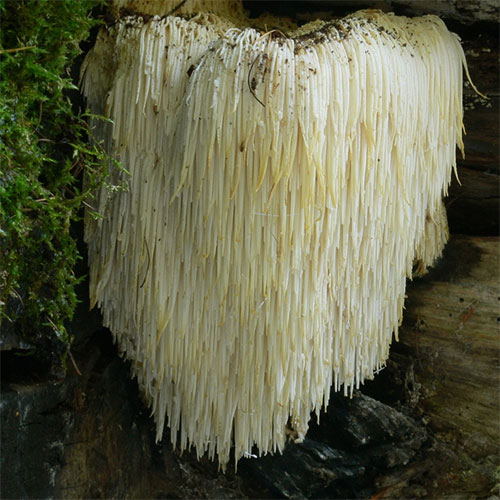You might be wondering what lion’s mane does to your body and how you can start using it. You can find various information online on what it does and how it affects your brain. This article will give you a brief explanation of the effects and benefits of Lion’s Mane. This nootropic mushroom has a sea food-like flavor and pairs well with quinoa, brown rice, and fresh vegetables such as sweet onion and bell peppers. If growing the mushroom is out of the question, you can buy the supplements in a variety of forms. Make sure to research the products thoroughly and buy the ones that contain high-quality ingredients.
Contents
What does lion’s mane do for the body?
Lion’s Mane is a natural supplement that contains a high concentration of GABA, a neurotransmitter that is responsible for causing relaxation and is also thought to have anti-depressant effects. Lion’s Mane has been used in Chinese medicine for supporting the digestive organs. Its calming effects on the nervous system have been shown to help alleviate pain in people with irritable bowel syndrome. Lion’s Mane is also believed to support the gut-brain axis, a complex network that is vital to the functioning of the brain.
Supplementation with Lion’s Mane is easy to do and can be obtained in capsule or powder form. It is most effective taken on an empty stomach but can also be mixed into your favorite beverage or food. You can also add the tincture to your recipes to boost the benefits of this natural supplement. It is recommended to start by taking half a capsule and gradually increase the dose, depending on the reaction of your body. Alternatively, you can drink the tincture directly under your tongue, swishing it around for 15 to 90 seconds. This process allows the tincture to absorb into the cell walls of your mouth.
How does lion’s mane make you feel?
Lion’s Mane works differently than marijuana. It boosts your overall happiness without creating a chemical dependency. Instead, it reduces inflammation and oxidative stress, which allow your brain to function normally. While you may develop a slight addiction to the herb, you will not need a full-blown drug to get the benefits of lion’s mane. In addition, you won’t need to deal with withdrawal symptoms, as the herb isn’t addictive.
Lion’s Mane is available in a variety of forms, including capsules and supplements. You can take it once a day or take multiple doses throughout the day. Powdered Lion’s Mane may offer better absorption and control than tablets. It should be avoided by people who have blood clotting problems or are allergic to mushrooms. A standard dose is 750 mg to 1,000 mg. It’s best to consult your health care provider if you’re taking medications that contain lion’s mane.
The mushroom has been used to treat diabetes, which causes nerve pain in diabetics. It works by inhibiting an enzyme called alpha-glucosidase. This enzyme breaks down carbohydrates in the small intestine. Therefore, lion’s mane reduces blood sugar levels and nerve pain. Researchers believe this supplement may help diabetics fight the pain and inflammation caused by diabetes.
What is Lion’s Mane side effects?
Hericium erinaceus (the mushroom found in lion’s mane) contains an active ingredient called hericenone, which inhibits the formation of blood clots. This property may help reduce the risk of heart attacks, which are common among people suffering from unregulated lipid metabolism. Hericium erinaceus may also have positive effects on memory and mood. This herb may be beneficial for elderly people with cognitive impairment and younger adults. Lion’s Mane side effects are unknown, but it is worth seeking medical advice before using this supplement.
Research has indicated that Lion’s Mane can help reduce inflammation in the body. Inflammation can lead to a variety of mental health conditions. Although inflammation is common during injury and illness, it can also develop when it’s not necessary. Studies have also shown that Lion’s Mane can help reduce the risk of depression in mice. Some studies suggest that Lion’s Mane may slow the spread of cancer to the lungs.
What does lion’s mane do to the brain?
The lion’s mane mushroom has long been used in Traditional Chinese Medicine, and is well known for its neuroprotective effects. It supports memory, focus, nerve health, and mood. There is evidence to support these effects. It may also speed up recovery from injuries of the brain or spinal cord. Despite the limited research, the benefits of lion’s mane mushroom are impressive. Here are some of the benefits.
According to studies, lion’s mane can reduce the level of pro-inflammatory cytokines, which are associated with various types of neurolgical disorders. Pro-inflammatory cytokines are believed to be at the root of a wide range of diseases, including depression. Lion’s mane is also thought to reduce pro-inflammatory proteins and protect the brain from various disorders.
The mushroom is also high in antioxidants. Its antioxidants and beta-glucan compounds allow it to pass through the blood-brain barrier and provide benefits to brain cells. This means it may prevent the development of depressive disorders and restore cognitive function. However, it is unclear what benefits it can bring to individuals with Parkinson’s. Therefore, it is vital to find out more about the mushroom’s potential benefits before making a purchase.
Lion’s Mane Safety
While many studies have found promising results from lion’s mane mushrooms, there is still some uncertainty surrounding the safety of lion’s mane. The mushroom is known to increase antioxidant activity and protect cells from damage, and this research may be relevant to the treatment and prevention of brain conditions like Parkinson’s disease. Researchers have also discovered that lion’s mane can improve cognitive function. While these results are promising, they are limited in terms of human trials.
To be safe and ensure the highest quality product, look for a third party analysis report containing information on the origin and extraction process of Lion’s mane. Look for supplements with a third-party analysis report, which will also list the approximate amount of polysaccharides in the extract. Some western producers cultivate Lion’s mane on grain and brown rice, which means the resulting products contain large amounts of starch with no therapeutic value. Another important point to consider when choosing a Lion’s mane supplement is that it be heated, as non-heated products have less bioavailability. The reason for this is that tough cell walls “lock” in the beneficial compounds.
Lion’s Mane Substrate
One of the first things you will need to grow your own lion’s mane is the correct substrate. The most effective substrate for lion’s mane growing is hardwood pellets. Pellets that contain no bran should not need sterilizing, as they will be sterilized during the pellet production process. Pellets that contain bran, however, must be sterilized before being used as a substrate, as bran must be added to sawdust.
For the best results, grow your lion’s mane mushrooms in a shady, dark area. The best location is under a mature evergreen tree, or a three-sided hut. You can also use an 80% shade cloth to protect your plants from extreme heat and direct sunlight. The lion’s mane mushroom is a slow-growing crop, and it takes about 2 years to produce fruit.
Depending on your level of experience, you can grow your own lion’s mane mushrooms indoors or on logs. Buying a mushroom kit is the easiest way to get started. These kits include all the supplies you need, including the substrate, mycelium, and growing medium. They are recommended for beginners and those who have little or no experience. However, the results from starting from commercial spawn are usually better.
Lion’s Mane Harvest
Lion’s Mane mushrooms are edible. They can weigh over a pound and can yield more than 2 pounds from a single 5 lb fruiting block. They are a semi-hollow mushroom with elongated spines. These mushrooms are found primarily on dead or decayed hardwood logs. Their harvest season is typically from the fall to early winter in most parts of North America. To get the most out of your harvest, start by drying the mushrooms before cooking.
Logs three to 10 inches (8 to 25 cm) in diameter should be used for growing the mushrooms. Logs harvested during the fall or winter season are best because they have more sugars in them. For starters, you can purchase spawn plugs online. You will need between 30 and 50 plugs for a four-foot log. Depending on the size of the log, you may need as many as 20 plugs.
Lion’s Mane price per pound
Lion’s Mane is a wild mushroom that has a wildly undefined cap and stem. This mushroom resembles a round balloon, and is often called the Bearded Tooth Mushroom or pompon. The mushroom has shaggy spines and grows in late summer and early fall throughout North America, Europe, and Asia. Prices per pound can range anywhere from $2 to $10 per pound.
Lion’s Mane has a subtle seafood flavor, but is not overpowering. Many people have compared it to lobster or shrimp. Because it is a vegetarian, lion’s mane is a great alternative to shellfish. It is a relatively long-lasting mushroom, but cooking it properly will require a long cooking time. This mushroom is best when cooked with sherry vinegar, white wine, shallots, and other ingredients.
The mushroom is a popular superfood, and it can be found for as low as $10 per pound. It is relatively easy to grow in a controlled environment and is widely available in the market. It is used as a supplement and has medicinal properties. If you want to grow your own, you can follow the instructions in Growing Lion’s Mane mushrooms, which include cultivation tips. The cost will vary depending on where you live, but you should expect it to be between $10 and $20 per pound.
Hi, I’m Pablo Garduno. I am a biohacking enthusiast, and Head Writer of SanDiegoHealth.org. I write the majority of the content on this site, and appreciate you taking the time to read my work.

